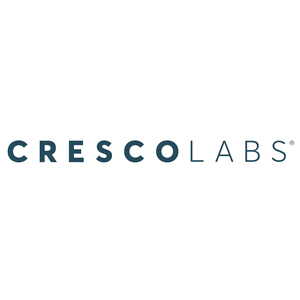\\\\ Top Cannabis retailing companies \\\\
\\\\\\\\\ Top Cannabis retailing companies \\\\\\\\\
-
Bonsai Cultivation
Bonsai Cultivation crafts award-winning recreational cannabis in Colorado, celebrated for quality, sustainability and on-time wholesale deliveries. With a state-of-the-art facility and passionate team, Bonsai blends innovative cultivation with supplying dispensaries and brands seeking premium flower, pre-rolls and white-label services, all while keeping environmental impact low.
-
Jardín Las Vegas
Jardín Las Vegas is a luxury cannabis dispensary offering a hospitality-driven experience backed by expert education. Its 20,000-square-foot flagship blends upscale design with diverse, highly trained staff, guiding guests through a full range of products to ensure they leave with the right choice.
-
Market 96 Neighborhood Dispensary
Market 96 Neighborhood Dispensary blends the warmth of a local market with the sophistication of modern cannabis retail. A woman- and Black-owned social equity enterprise, it offers curated cannabis and lifestyle products delivered through exceptional customer service and strong community connections. It brings an inviting, neighborhood-inspired experience that redefines the cannabis retail experience.
-
The Bakeree
The Bakeree is Seattle’s award-winning cannabis dispensary, serving connoisseurs since 2011. This isn’t your average pot shop; it’s obsessed with quality and rejects anything with synthetic pesticides or additives. Its science-savvy budtenders speak the language, whether customers seek ‘gas’ or citrus-forward hybrids. From seed to smoke, they deliver extraordinary cannabis experiences.
-
Cresco Labs
Cresco Labs, founded in 2013, is a Chicago-based, vertically integrated cannabis company operating in multiple U.S. states. It offers a diverse product portfolio, including brands like Cresco, High Supply, and Mindy's Edibles. Through its Sunnyside dispensaries, it provides both medical and recreational cannabis products. In 2024, it reported revenue of $724 million and achieved record operating cash flow of $132 million.
-
Flowhub
Flowhub, founded in 2015 by Kyle Sherman, is a leading cannabis retail software company. It provides dispensaries with compliance, point of sale, inventory tracking, and business intelligence solutions. Processing over $3 billion in annual cannabis sales, it empowers more than 1,000 retailers to enhance operations and customer experiences.
-
IndicaOnline
IndicaOnline, established in 2011, offers a cloud-based point-of-sale platform for the cannabis industry. Its software assists dispensaries with compliance, inventory management, and delivery operations. Features include patient verification, inventory tracking, and automated state reporting. Headquartered in Los Angeles, it serves clients across the United States, Canada, and Europe.
-
MyBud POS
MyBud POS provides an all-in-one point of sale system tailored for cannabis dispensaries. It offers durable hardware and user-friendly software to streamline operations, enhance customer experiences, and ensure compliance with industry regulations. Its seamless integration with systems like Metrc and BioTrack simplifies reporting and inventory management, supporting dispensaries in the rapidly growing cannabis market.
-
Sublime Cannabis Co.,
Sublime Cannabis Co., based in Mashpee, Massachusetts, is a family-owned dispensary offering recreational cannabis products. It was founded by CEO Robert Catania, a Culinary Institute of America graduate with extensive hospitality experience, and President Evan Lehrer, an urban planner with cannabis regulatory expertise. The company emphasizes quality, locally grown, full-spectrum cannabis, aiming to elevate the shopping experience for all customers.
More in News
Pioneering Methods Redefining Cannabis Extraction Standards
Friday, November 21, 2025
Fremont, CA: The cannabis extraction industry is rapidly evolving due to the introduction of new techniques and technologies designed to meet increasing demand and improve product quality. This expansion focuses on improving efficiency, sustainability, and customization to attract the next generation of cannabis users. While butane and ethanol have traditionally been used for extraction, more effective and environmentally friendly methods are anticipated to become more popular in the future. Solventless extraction methods, such as rosin and ice water, are becoming increasingly popular due to their purity and safety. High-pressure and temperature extraction techniques are emerging, potentially offering higher yields and faster extraction times while maintaining the integrity of cannabinoids and terpenes. Terpene isolation will also become more refined, allowing for tailored consumer experiences and more consistent products as the entourage effect between cannabinoids and terpenes is better understood. Automation and AI: Revolutionizing the Extraction Process As demand for cannabis products increases, the need for scalable and efficient extraction systems will drive automation. Using robotics and AI-driven technologies will enable more precise control over extraction parameters like temperature, pressure, and time, leading to higher consistency and less waste. Automated systems will be able to handle larger quantities of raw materials, making extraction processes more cost-effective and efficient. AI could optimize these systems, adapting extraction methods in real-time based on plant genetics or desired cannabinoid profiles, further enhancing production. Sustainability: Toward an Eco-Friendly Cannabis Industry With cannabis cultivation and extraction processes becoming more widespread, the environmental impact of these industries will come under greater scrutiny. In response, the future of cannabis extraction will likely focus on sustainability, with a greater emphasis on eco-friendly methods. Solventless extraction technologies could reduce reliance on harmful chemicals, and more sustainable solvents, such as food-grade ethanol, will become more common. Innovations like closed-loop systems, which recycle solvents, and adopting renewable energy sources in extraction facilities will also help minimize the ecological footprint of the cannabis industry. The future of cannabis extraction will likely see a shift toward more personalized products, enabling consumers to select products based on specific cannabinoid and terpene profiles that meet individual needs. Advancements in extraction techniques will allow manufacturers to create highly customized products for medical use, offering precise formulations for conditions like chronic pain or anxiety. As consumer demand for unique, tailored experiences grows, new products such as targeted edibles, beverages, and topicals will emerge, each designed to deliver specific effects based on the extracted compounds.
Uncovering the Truth About Cannabis and Accounting
Thursday, November 20, 2025
Fremont, CA: The marijuana industry has experienced rapid growth in recent years, attracting heightened scrutiny and giving rise to numerous misconceptions, especially regarding accounting practices. As legalization expands across states and countries, distinguishing myth from reality becomes essential for businesses aiming to succeed. This article explores five prevalent myths about marijuana and the accounting industry, offering clear insights for those navigating this dynamic field. Myth 1: Marijuana Businesses Cannot Obtain Bank Accounts One of the most prevalent myths is that marijuana businesses cannot open bank accounts. Although federal regulations are somewhat of a problem, many financial institutions are finding ways to work with cannabis companies. These businesses can secure banking services by being strict in compliance measures, but it may take more effort and documentation than any other industry. Myth 2: Marijuana Businesses Are Cash-Only The second misconception is that a marijuana business only accepts cash. Although cash is indeed more prevalent as a result of banking restrictions, many businesses have adopted alternative payment options. Digital payment solutions and collaborations with compliant financial institutions are increasingly reducing the dependency on cash and making transactions safer and more efficient. Myth 3: Accounting for Marijuana Businesses Is the Same as Any Other Industry Accounting for marijuana businesses presents a unique challenge that differs from other industries. The complex regulatory environment calls for specialized knowledge to be on the right side of the law, both at the state and federal levels. Accountants working in this sector have to be knowledgeable about cannabis-specific regulations that prohibit standard business deductions for companies engaging in the trafficking of controlled substances. Myth 4: Marijuana Businesses Don't Require Specialized Accountants The marijuana businesses enjoy significant advantages in working with accountants specialized in the cannabis industry. This is because accountants specialized in the cannabis industry are conversant with the various aspects of the law and give insight on matters such as compliance, tax planning, and management of finances. Working with general accountants exposes one to mistakes and possible litigation cases that would cost a lot. Myth 5: Marijuana Businesses Can't Be Profitable Due to High Taxes While it is a fact that the marijuana business faces a higher tax burden due to the regulations, this does not necessarily mean that the business cannot be profitable. With good financial planning and strategic tax management, cannabis companies can navigate the challenges and find profitability. Specialized accountants play a crucial role in helping businesses optimize their financial strategies to mitigate the impact of high taxes.
Elevating Craft Cannabis Through Premium Handling Standards
Thursday, November 20, 2025
Fremont, CA: In the legal cannabis market, a clear distinction is emerging between mass-produced products and high-end, limited-edition offerings. Artisanal cannabis, cultivated with care in small batches, represents the highest quality, featuring unique terpene profiles, optimal potency, and an exceptional consumer experience. However, this premium status also comes with challenges due to the product's delicate nature. To preserve the integrity of these handcrafted buds and extracts from the farm to the retail shelf, a specialized approach is required. This need is being addressed by the emergence of "white glove" services in the cannabis supply chain. Preserving Quality: A Science of Specialization White glove services play a critical role in preserving the intrinsic quality of artisanal cannabis, which is highly sensitive to environmental factors and handling. To maintain potency and aromatic profiles, which are closely tied to cannabinoids and terpenes, these services utilize climate-controlled transport and storage solutions that stabilize temperature, humidity, and light exposure, thereby preventing mold growth and degradation of volatile compounds. Equally important is the delicate handling and packaging of the product: hand-trimmed flower, valued for its intact trichomes, requires careful movement and specialized protective packaging to safeguard both its physical integrity and chemical profile. Beyond quality preservation, white glove logistics also prioritizes enhanced security and traceability. Through advanced tracking systems, discreet transportation, and trained personnel adhering to strict chain-of-custody protocols, these services minimize the risk of theft or loss while ensuring compliance with stringent seed-to-sale regulations—a critical consideration in the regulated cannabis market. Beyond Logistics: Elevating the Brand Experience For small-batch cultivators and artisanal brands, white glove services transcend basic product preservation, becoming a strategic extension of the brand itself. By ensuring flawless delivery, these services reinforce the perception of premium quality, validating higher price points and underscoring the brand’s commitment to excellence. Specialized final-mile logistics, often involving trained teams delivering directly to dispensaries and following precise handling instructions, enhance the retailer experience and guarantee products arrive ready for display and sale. White glove partners also manage the complexities of compliance, overseeing proper documentation and adherence to state-specific cannabis transportation and storage regulations. This comprehensive approach allows artisanal producers to focus on cultivation and innovation while maintaining the integrity and prestige of their brand. The decision to utilize white glove services is an investment in product integrity and brand reputation. For artisanal cannabis, where quality is the core differentiator, safeguarding the product is paramount. As the industry matures, the role of these specialized service providers will continue to grow, establishing the gold standard for handling sensitive, high-value goods and ensuring that the effort and passion invested in cultivation are perfectly preserved all the way to the discerning consumer.
The Impact of Innovation on Cannabis Extraction Efficiency
Wednesday, November 19, 2025
Fremont, CA: The cannabis industry has experienced significant growth in recent years, leading to an increased demand for cannabis-derived products in both medicinal and recreational markets. As this market continues to expand, the need for effective and reliable extraction technologies has become increasingly important. Cannabis extraction is the process of isolating desirable compounds, primarily cannabinoids such as THC and CBD, from the cannabis plant. Various extraction technologies have emerged to meet this rising demand and ensure high product quality, each with its benefits and challenges. Solvent-based cannabis extraction involves using solvents such as ethanol, butane, or propane to dissolve cannabinoids and terpenes in cannabis plants. This is a favorite method because ethanol extraction is quite efficient and scalable. Despite this, residual solvents and contamination issues made the industry seek safer, more environmentally friendly alternatives. This is suitable for use on a small and industrial scale. Butane hash oil, or BHO, is one of the most popular extraction methods for making concentrated cannabis extracts such as wax, shatter, and live resin. It involves using butane as a solvent to extract cannabinoids and terpenes from plant material, yielding highly concentrated products with intense effects. However, it is a dangerous process since it involves flammable solvents. CO2 extraction is a safe and efficient method of extracting cannabinoids and terpenes from cannabis plants. It uses carbon dioxide in a supercritical state, allowing for precise temperature and pressure control. This method is ideal for high-quality, medical-grade cannabis products, but its high initial costs and slower process may be a barrier for smaller producers. The process is typically clean and without residual solvents. There has been a rise in solventless extraction methods such as rosin pressing and dry-sifting, which are easy and safe. Ro-sin pressing uses heat and pressure to extract oils from cannabis flowers or hashes, resulting in an entirely solvent-free concentrate with the plant's natural flavor and aroma. Dry sifting separates resin-producing glands from plant material, producing kief, clean, high-quality extract. These methods are a more natural alternative to solvent-based methods, making them preferred by consumers who want only organic and solvent-free products. Advances in cannabis extraction are focused on nanotechnology to improve the bioavailability and potency of extracts. By breaking down cannabinoids into nanoparticles, companies can create products with faster onset times and more potent effects. This is particularly promising for edible cannabis products, which often face slow onset times. The cannabis industry focuses on sustainability and environmental impact, with companies exploring green extraction methods to reduce energy consumption and waste while maintaining high product quality. This aligns with broader trends in agriculture and manufacturing, as consumers and regulators prioritize eco-friendly practices. Therefore, the evolution of cannabis extraction technologies is essential to sustain the growing demand for products that are based on cannabis but with consistency, safety, and quality. This technology provides producers with better alternatives for consumers who want potent concentrates, clean oils, or eco-friendly products. It also promotes improved product quality, consumer safety, and sustainability, guaranteeing responsible market growth.
The Architectural Normalization of Cannabis Cultivation
Wednesday, November 19, 2025
The physical footprint of the cannabis industry is undergoing a profound metamorphosis. For decades, cultivation was defined by invisibility—relegated to windowless warehouses, subterranean basements, and nondescript industrial parks designed solely for concealment. However, as the industry matures and moves toward widespread legitimacy, the architectural language of cannabis is shifting from secrecy to sophistication. Today, cultivation facilities are no longer hidden; they are being designed as integrated components of the built environment, blending seamlessly into dense urban cores and sprawling rural pastoral landscapes alike. This shift represents a new era of "architectural normalization." Design professionals are now tasked with creating high-performance facilities that respect local vernaculars, utilize advanced building technologies, and contribute positively to their communities' visual fabric. Adaptive Reuse and Vertical Integration In metropolitan environments, contemporary architectural strategies emphasize density and meaningful engagement with the surrounding urban fabric, marking a shift away from opaque, self-contained warehouse models. Adaptive reuse has become a defining approach, with architects transforming former industrial facilities—such as textile mills, printing plants, and automotive factories—into highly engineered, modern operations while preserving their historic structural envelopes. This approach maintains the established rhythm of the streetscape and reinforces an industrial chic aesthetic that aligns with the character of revitalizing districts. Exterior features such as long-sealed windows are being reopened, supported by innovations like smart glass and strategically planned interior circulation to balance stringent cultivation light requirements with the benefits of natural daylight in administrative and processing zones. In parallel, the constraints of limited urban footprints have driven a rise in vertical cultivation facilities, creating a new architectural typology that leverages height rather than sprawl. These structures resemble mid-rise office buildings or data centers, and their design solutions prioritize integrating substantial mechanical systems—particularly HVAC and lighting—without disrupting the building’s external profile. Mechanical penthouses, louvered façades, and other concealed infrastructure systems support a streamlined appearance, allowing these facilities to blend seamlessly into technology parks and logistics districts while maintaining robust security and operational functionality. Rural Harmonization: The Neo-Agrarian Aesthetic Outside urban boundaries, the design approach shifts from containment to thoughtful integration with the rural environment. In these settings, the objective is to reconcile advanced pharmaceutical-grade production with the visual language of traditional agriculture. This evolution is most evident in the emergence of contemporary greenhouse architecture, where distinctive jagged rooflines and high-performance glazing systems replace older, utilitarian structures. Modern facilities are carefully aligned with natural topography, employing lowered foundations and ridge orientations that complement surrounding landforms. The resulting aesthetic is increasingly “Neo-Agrarian,” characterized by materials such as corten steel, treated timber, and stone—elements that weather naturally and visually anchor the facilities within the landscape. From afar, these hybrid structures evoke the familiar silhouettes of barns or stables, while up close they function as controlled, laboratory-grade environments. Landscape architecture plays an equally critical role in ensuring visual continuity. Instead of relying on conventional fencing and paved perimeters, developers are incorporating berms, bioswales, and native planting buffers to soften structural edges and blend facilities into their agricultural surroundings. Security elements are discreetly embedded within these landscape features, preserving the area's pastoral character while meeting operational requirements. A significant architectural development is the move toward transparency. Just as breweries and open-concept kitchens invite consumers to view the production process, select cannabis facilities are incorporating public-facing architectural elements. In jurisdictions where it is permitted, architects are designing "hybrid" facilities that combine cultivation with retail or education. This requires a complex interior layout that separates secure, sterile grow zones from public spaces using high-security glazing. Visually, this allows visitors to see the "art" of cultivation—the rows of plants, the LED arrays, and the automated systems—turning the industrial process into a visual centerpiece. This transparency serves a dual purpose: it creates an immersive brand experience and acts as a powerful architectural statement of legitimacy. It signals that the facility has nothing to hide, normalizing the plant's presence in the commercial sphere. Olfactory Architecture and Invisible Systems While visual integration is paramount, "olfactory architecture" is a critical, albeit invisible, component of modern facility design. To blend into a community, a facility must be undetectable to the nose. Architectural integration now involves seamlessly embedding advanced air filtration systems. Exhaust stacks, once unsightly industrial appendages, are now architecturally shrouded or integrated into the building's massing. The "lungs" of the building are designed to be silent and scentless. By prioritizing the containment of terpenes within the building envelope through hermetic sealing and negative-pressure zones, architects ensure the facility is a good neighbor. This invisible engineering enables cultivation sites to be located closer to residential and commercial zones without sensory intrusion. Sustainability has become a defining pillar of contemporary architectural integration, with the energy and resource demands of indoor cultivation directly shaping both form and materiality. Photovoltaic systems are now incorporated into rooflines and solar carports as intentional design elements that demonstrate a clear commitment to renewable energy. Roof structures are being optimized for rainwater recapture, and the associated storage silos are often expressed as deliberate architectural features rather than concealed utilities. In parallel, exterior façades increasingly incorporate living walls or vertical gardens that reinforce the biological essence of the operation, enhance insulation performance, and visibly connect the facility to its agricultural foundation. Ultimately, the architecture chronicled here is creating a new commercial typology. The contemporary cannabis facility is evolving into a hybrid model: part high-tech laboratory, part agricultural showpiece, and part responsibly-designed neighbor. This architectural acceptance is crucial, as it fundamentally alters public perception, solidifying cannabis cultivation's place not as a clandestine operation, but as a normalized, value-adding component of the modern urban and rural landscape.
Strategic Governance for Cannabis Enterprises in a High-Stakes Landscape
Wednesday, November 19, 2025
To ensure long-term viability and public trust, boards of directors in the cannabis industry must adopt proactive, adaptive risk governance strategies that address legal ambiguity, ethical responsibilities, and the evolving regulatory landscape. The intersection of governance, ethical standards, and accountability influences the operational integrity of cannabis businesses and shapes public perception and stakeholder trust. Understanding how these factors interact is essential for fostering a sustainable and responsible cannabis sector that can thrive while addressing the various risks associated with its growth. The Board's Central Role in Risk Oversight At the heart of sound risk governance lays an engaged and informed board of directors. For cannabis enterprises, the board's responsibilities extend beyond typical corporate oversight. They are tasked with comprehending and strategically addressing a unique spectrum of risks, encompassing regulatory flux, operational intricacies, financial complexities, and reputational vulnerabilities. A board's composition is increasingly critical, with an emphasis on diverse expertise spanning legal, economic, agricultural, pharmaceutical, and consumer goods sectors. Such breadth enables a comprehensive understanding of the enterprise's risk profile. Independent directors play a particularly vital role, providing objective perspectives and challenging conventional thinking, thereby strengthening the board's ability to identify emerging risks and ensure that appropriate mitigation strategies are in place. Effective board oversight in the cannabis sector necessitates a proactive approach to risk identification and assessment. This involves establishing clear lines of authority and responsibility for risk management throughout the organization. The board should ensure that a comprehensive risk management framework is in place, capable of systematically identifying, evaluating, and prioritizing risks. This framework must be dynamic, adapting to the constant shifts in the legal and market environment. Regular reporting mechanisms are essential, as they provide the board with timely and accurate information on key risks and the effectiveness of control measures. The board's role also includes setting the organization's risk appetite, defining the level of risk the enterprise is willing to accept in pursuit of its strategic objectives. This delicate balance between growth and prudent risk-taking is a constant challenge, requiring continuous dialogue and informed decision-making at the highest level. Embedding Ethics in Cannabis Operations Ethics form the bedrock of sustainable operations in any industry, but their prominence is amplified within the nascent and often scrutinized cannabis sector. Ethical considerations permeate every aspect of risk governance, influencing decision-making from cultivation practices to product development, marketing, and community engagement. Boards have a profound responsibility to champion a culture of integrity and ethical conduct throughout the enterprise. This begins with articulating a clear code of ethics that addresses the specific nuances of the cannabis industry, such as responsible product stewardship, transparency in marketing, and equitable business practices. Beyond mere compliance with regulations, ethical governance in cannabis demands a commitment to social responsibility. This includes prioritizing consumer safety through rigorous testing protocols and transparent labeling. It extends to fostering fair labor practices, ensuring safe working conditions, and promoting diversity, equity, and inclusion within the workforce and leadership ranks. Environmental stewardship is another critical ethical dimension, particularly given the energy and resource demands of cultivation. Boards must oversee the adoption of sustainable practices, encompassing water conservation, waste management, and the pursuit of renewable energy sources. The ethical compass of the enterprise, guided by the board, defines its public perception and its ability to build lasting trust with consumers, investors, and communities. Mechanisms for Accountability Accountability is the vital link that connects risk governance and ethical principles to tangible outcomes. It ensures that individuals and departments are accountable for their actions and decisions, particularly in matters of risk management and moral conduct. For boards in cannabis enterprises, establishing robust accountability mechanisms is paramount. This involves delineating roles and responsibilities for risk ownership across all levels of the organization, from front-line employees to senior management and ultimately, the board itself. Performance metrics and incentives should be aligned with sound risk management and ethical conduct, reinforcing desired behaviors. Effective accountability also requires transparent reporting and consequences for non-compliance. Regular audits, both internal and external, serve as crucial tools for verifying adherence to established policies and identifying potential weaknesses in control environments. When deviations occur, clear disciplinary procedures and corrective actions must be implemented consistently and fairly. Likewise, a culture of open communication where concerns can be raised without fear of retribution is essential for fostering a truly accountable environment. This includes whistle-blower protections and mechanisms for addressing ethical dilemmas. The board's ultimate accountability lies in safeguarding the long-term value of the enterprise for all stakeholders, including shareholders, employees, consumers, and the community in which it operates. This involves not only financial performance but also the enterprise's social and environmental impact. Effective risk governance is becoming a cornerstone of legitimacy and long-term success in the cannabis industry, requiring boards to integrate ethical oversight and accountability into increasingly sophisticated governance frameworks that can adapt to global regulatory and market demands. Boards are increasingly recognized as central architects of robust risk management frameworks, demonstrating visionary leadership and a commitment to ethical conduct. The deliberate integration of ethical considerations into every operational facet, coupled with a rigorous culture of accountability, is transforming the cannabis sector into a mature, responsible, and sustainable contributor to the global economy. The ongoing commitment to these pillars of governance will be the accurate measure of progress and resilience for cannabis enterprises in the years to come.



















